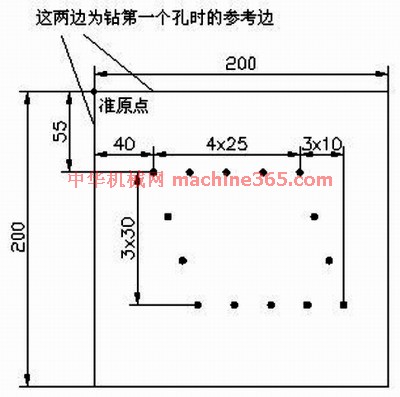|
|
|
说明:双击或选中下面任意单词,将显示该词的音标、读音、翻译等;选中中文或多个词,将显示翻译。
|
|
|
1) array pointer

数组指针
1.
Describes the differences between pointer array an d array pointer,and illustrates the application of pointer array by an example.
论述了指针数组与数组指针的区别 ,并以一个实例说明指针数组的应用。
2) pointer array

指针数组
1.
Traditional data partition ways are not suitable to pointer array whose member points to an array,so this paper presents a new mode to solve this problem,named array-vector data partition mode.
传统数据划分模式不适合指向数组的指针数组的数据划分,论文提出了解决该类指针数组数据划分的划分模式,文中称为数组向量的数据划分。
2.
Describes the differences between pointer array an d array pointer,and illustrates the application of pointer array by an example.
论述了指针数组与数组指针的区别 ,并以一个实例说明指针数组的应用。
3) array pointer and pointer array

数组指针与指针数组
1.
pointer and pointer variable, array pointer and pointer array , fuction pionter and function return pointer and multiple pointer are studied in the text.
从指针与指针变量,还有数组指针与指针数组,函数指针与指针函数等方面分析了与“指针”有关的数据类型。
4) array and pointer

数组和指针
5) numerical combination and pointer

数组与指针
6) function pointer array

函数指针数组
1.
It uses function pointer array and keywords grouping list so that it has a good scalability,versatility and to carry out secondary development.
系统采用函数指针数组和关键字分组表两种方法,解决了关键字扩充和NC代码功能转移的问题,使该解释器具有良好的扩充性和通用性,易于进行二次开发。
补充资料:Pro/ENGINEER中复杂几何路径的数组阵列
1 引言 Pro/ENGINEER是目前应用非常广泛的CAD/CAM软件,其功能非常强大。在Pro/ENGINEER中进行特征复制时, PATTERN(数组阵列)可以一次建立多个相同的特征,比COPY(复制)省时省力。 在实际应用中,阵列的几何路径有规则的(如直线形、圆形等),也有不规则的(如平行四边形、椭圆形等)。对于规则路径,其生成较简单,如圆形路径,选取一周向驱动尺寸,输入阵列的增量与个数即可。下面以在基座上钻孔为例,介绍不规则几何路径的数组阵列。 2 设计实例 首先,生成基座(如图1黑点表示孔的圆心位),其中心点位于Pro/ENGINEER中坐标系的原点,再钻出左上角的第一个孔(以基座的两条边为参考边,这两条边的交点为准原点)。然后进行数组阵列,产生其余的孔,依次选择“Pattern→General→Table”。 
图1 黑点表示孔的圆心位 2.1 步骤一 选择图1中的尺寸“40,55”作为“表格驱动阵列的驱动尺寸”,然后选“Done”。 2.2 步骤二 选择“Add”,进行表的添加(输入一个表名如A),接着打开一个窗口,其中已有的文字均为注释语句,最后一行为: idx d4(40.0) d3(55.0) 其中,idx表示这一列填的是序号,从1开始;d后的数字以实际操作中产生的为准,括号内数值为步骤1中所选驱动尺寸的值,可以看出该值的显示顺序与尺寸的选择顺序是对应的。 2.3 步骤三 进行表的录入,依次填入:
1 65 55
2 90 55
3 115 55
4 140 55
5 50 85
6 60 115
7 70 145
8 95 145
9 120 145
10 145 145
11 170 145
12 150 85
13 160 115 其中1~4为上部右边的4个孔,5~7为左边3个孔,8~11为下部右边4个孔,12~13为右边剩余2个孔。 2.4 步骤四 首先点击“File→Save”,并且进行保存。然后点击“File→Exit”,退出程序。之后执行“Done”即可进行阵列,如图2所示。
说明:补充资料仅用于学习参考,请勿用于其它任何用途。
参考词条
|





